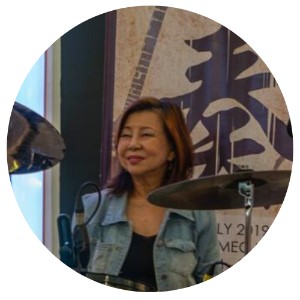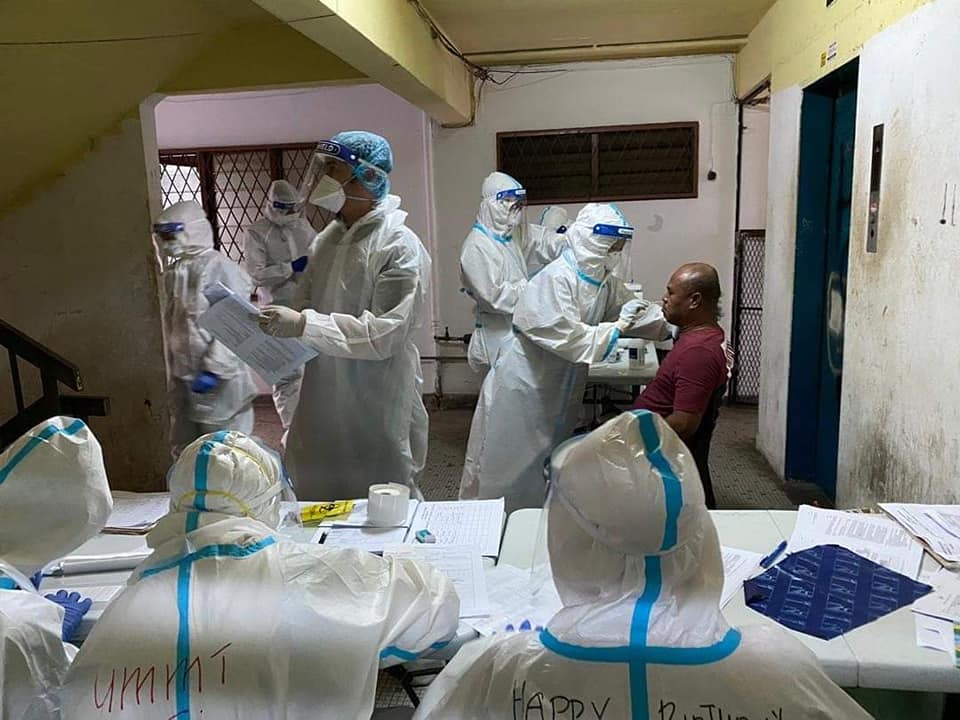During the 8 June World Health Organization (WHO) media briefing, Maria van Kerkhove, technical lead Covid-19, WHO Health Emergencies Programme, said “it still seems to be rare that an asymptomatic person actually transmits onward to a secondary individual.”
She was responding to a question about an asymptomatic Covid-19 patient’s ability to spread the disease.
“We have a number of reports from countries who are doing very detailed contact tracing. They’re following asymptomatic cases. They’re following contacts. They’re not finding secondary transmission onward. It’s very rare.”
“What we really want to be focused on is following the symptomatic cases. If we actually followed all of the symptomatic cases, isolated those cases, followed the contacts and quarantined those contacts, we would drastically reduce the outbreak”.
Experts have questioned the WHO official’s comment on “rare” asymptomatic Covid-19 spread.
“Asymptomatic transmission very rare” — Anecdotal or Backed by Data?
Her opinion went against all current scientific publications and ground-zero field investigations of clusters and outbreaks in enclosed populations. The reaction to it was swift.
On 9 June, Liam Smeeth, Professor of Clinical Epidemiology at the London School of Hygiene and Tropical Medicine questioned this, saying this guidance could pose problems for governments as they seek to lift lockdowns.
The co-head of Singapore’s coronavirus task force told Reuters there had been asymptomatic transmission cases in Singapore, between people living in close quarters.
Following the deluge of queries from this confusing statement, WHO on 9 June organised a live Q&A broadcast on 9 June 2020 on Covid-19 transmission with Dr Micheal Ryan, executive director of the WHO Health Emergencies Programme, and Dr Maria Van Kerkhove.
They were careful to say that Dr Maria’s statement was not a WHO guideline, merely a response to a question on an evolving challenge. An international expert group is currently meeting for three days to review all existing evidence and country practices and will come up with a recommendation for WHO.
“Very Rare” for Asymptomatics to Spread SARS-CoV-2: Science or Politics?
One cannot help but speculate whether this “happy, albeit misunderstood, news” was related to the 2 June press reports about China’s incredible feat of nucleic acid nasal swab testing of 9.899 million people in Wuhan, a city of 11 million people, between 14 May and 1 June. Wuhan’s testing blitz cost the city government around 900 million yuan (U$127 million).
The citywide Covid-19 test found only 300 asymptomatic cases.
Residents queued up across the city at makeshift sites set up under tents in parking lots, parks and residential communities to have their nasal swab samples taken — with roughly half a million tests conducted every day during the period.
How Wuhan Achieved Large Scale Mass Population Testing Within 2 Weeks
Feng Zijian, the Deputy Director-General of the Chinese Centre for Disease Control and Prevention (China CDC), on 3 June said that in addition to mobilizing a large number of medical personnel, third-party testing agencies and testing equipment, the city has adopted new methods, such as “pool testing,” which mixed no more than five samples in one test.
A negative result of a pooled sample means the batch can be cleared, and a positive one requires a second-round test for each individual in that batch.
“The method has greatly accelerated the process of detection and improved the efficiency,” said Feng. “Before it was adopted, the experts did a number of preliminary tests on small scale to determine a relatively optimal ratio for mixing samples – which is how many specimens should be mixed together for testing.”
The city had also strengthened the quality management and control of the whole testing work, Feng added. A total of 35,961 samples have been retested by separate agencies, and the results were completely consistent with the initial test results, which proved that the whole test design was very reliable. To ensure full coverage, door-to-door sampling was also provided for the elderly and disabled.
No virulent virus was isolated from throat swabs and sputum of 300 asymptomatics.
Scientists in Wuhan Institute of Virology then started to isolate and cultivate the virus from these 300 cases to find out their infectiousness i.e. whether the virus can infect or kill cultured human cells. It turned out “viral loads in those samples were extremely low”, which suggests “Wuhan’s asymptomatic carriers are not infectious”, experts concluded.
“Although these asymptomatic patients tested positive on Covid-19 virus, if the viral loads in the samples are very low, then infectious virus cannot be isolated and cultivated,” said Zhang Dingyu, deputy director of Health Commission of Hubei Province. (Wuhan is the provincial capital). It was not clear from this report whether viral studies were actually completed for all the 300 cases.
Meanwhile, samples collected from the surfaces of the personal belongings of asymptomatic carriers e.g. toothbrushes, mugs, masks and towels have tested negative for SARS-CoV-2.
A total of 1,174 close contacts of the 300 cases have also tested negative for coronavirus. “No asymptomatic people were found to have infected others”, said Lu Zuxun, a public health expert from Wuhan’s Huazhong University of Science and Technology.
9.89 million Covid-19 tests show Wuhan is safe, as of 3 June 2020.
Since the last case on 3 April and the end of lockdown on 8 April, there had been no case. Five new cases were reported 11 May, all from the same residential compound. They were all asymptomatic, meaning they tested positive for the virus but were not exhibiting clinical signs such as a cough or fever. China does not count asymptomatic cases in its official tally of confirmed infections until they show symptoms.
Fearing a second wave and to reassure those still living in fear across Wuhan after the coronavirus claimed over 3,869 lives, this mass population screening was launched. Despite Hubei having 68,135 confirmed cases and 4512 deaths (31Dec – 5 June) there were only 300 asymptomatic Covid-positive cases out of the almost 10 million screened (3/100,000).
Li Lanjuan, one of China’s leading epidemiologists who had battled the novel coronavirus on the front line in Wuhan, said that “the data fully proves that Wuhan is safe and that the citizens are in good health, the city has basically recovered and should be treated equally with other cities”.
Mass Screening of Asymptomatic Population Vs Targeted Screening
Worried citizens have called on governments to do mass population screening. The Wuhan testing blitz has shown that mass screening of people without symptoms may only pick up a small number of asymptomatic cases, even in a region recovering from a devastating tsunami of cases.
900 million yuan (RM543 million) spent to test 9.899 million people yielded only 300 asymptomatic cases. Which nation can afford this, except China?
But they needed to make sure every potential infectious source in Wuhan is identified and isolated to preempt a second tsunami.
Perhaps they had expected to find more positive cases than this. That 9.899 million people around them have been found negative, and the 300 positives have been isolated is reassuring indeed.
From now, “hyper-alert” active case detection, testing (and retesting) on the slightest suspicion, and prompt, expansive, IT-assisted contact detection, testing and quarantine will help prevent new clusters from kindling another conflagration.
Perhaps, this was what Dr Maria really meant to say. Where human and testing resources are limited and the epidemic is still on the bull-run, the return of investment to stop transmission is higher for active cases and their contact detection.
It is more cost effective to go after newly confirmed positive cases and quickly test and isolate all their contacts, regardless of symptoms.
Covid-19 cases are most infectious in the first 2-10 days after infection with or without symptoms. If our health inspectors can move faster than the virus (infector-infectee serial interval 4-8 days) to track all contacts to test and quarantine them, transmission chains can be aborted.
Of course, if a positive case is found in enclosed environment like prisons, dormitories or nursing homes, prompt mass screening and quarantine of everybody, regardless of symptoms, is vital and worth the cost. In such clusters, selective testing based on symptoms alone will miss the pre-symptomatic and asymptomatic infectious cases and may not break the transmission.
Guidelines from WHO or CDC are suggestions for “good practice” based on current and evolving information on a novel virus – to be adapted not adopted.
Every nation must build up its panel of independent experts to avoid U-turn debacles. In the middle of an evolving pandemic of a novel virus and a tsunami of publications and press releases, we should not blindly follow external “expert” opinions and jump ship without consulting our own.
Without reinventing the wheel, we can adapt these guidelines to match our capacity and stage of epidemic curve.
I am neither pro-China or anti-WHO. I am just pro-health and proudly Malaysian. Syabas to our DG and health care workers who are doing a great job keeping Covid death rates and transmission low at great personal sacrifice. Malaysia Boleh.

A fusion opinion from a Sarawakian public health specialist, paediatrician, ex-associate professor, disaster relief and medical volunteer, passionate about helping people learn.
- This is the personal opinion of the writer or publication and does not necessarily represent the views of CodeBlue.







